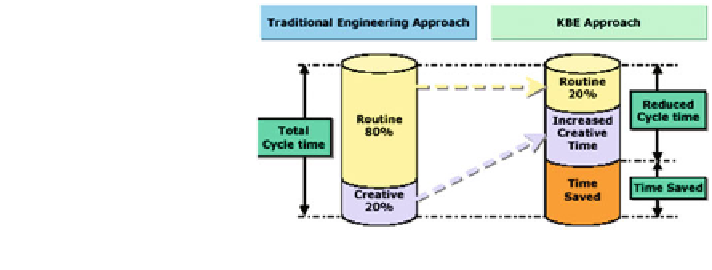Information Technology Reference
In-Depth Information
Fig. 1.28
Benefits of KBE
(Fig.
1.28
). In 3D-TestBench, the identified key benefit of KBE is the accessibility
of knowledge incorporated in software including its traceability and knowledge
rules applied to the automated design process, which is expected to improve the
modularity, and to level and ease the automation process. When M&S activities
are commonly carried out, they should be effectively integrated in the development
process to improve:
• ideation,
innovation,
understanding
of
complexity,
and
visualization
of
function;
• explanation of concepts, designs, operations to all stakeholders in a readily
understandable manner;
• reliability: models used in simulation activities can be directly derived from the
design;
• accuracy: the input parameters of a simulation can come from other simulators,
or one can use several elementary simulations, each of them devoted to the
modeling of a specific function;
• efficiency: integration of simulators within the same environment allows data
exchange to occur automatically.
Therefore, from the standpoint of simulation end-users, the integration of
multidisciplinary models addressing different aspects of system engineering is
very relevant. The innovation aspects are in the integration of technologies sup-
porting the lifecycle product management phases with the visual analytics aspects
within the M&S tools, thus adding new requirements and functions which will be
easily integrated in a multidisciplinary simulation and visualization environment.
The applied approach within 3D-TestBench is that the complex workflows
describe, both logically and practically, how the analysis of the specific virtual
prototype is carried out. The XML standard is applied to describe the sequence of
operations, dependencies, design parameters, and functional objectives in order to
handle heterogeneity, integration of legacy systems, openness, reusability, and
extendibility imposed requirements (Fig.
1.28
).
For the 3D-Testbench use case (Fig.
1.29
), the multidisciplinary wing design
was selected. It starts with the geometry definition, which represents the reference

Search WWH ::

Custom Search